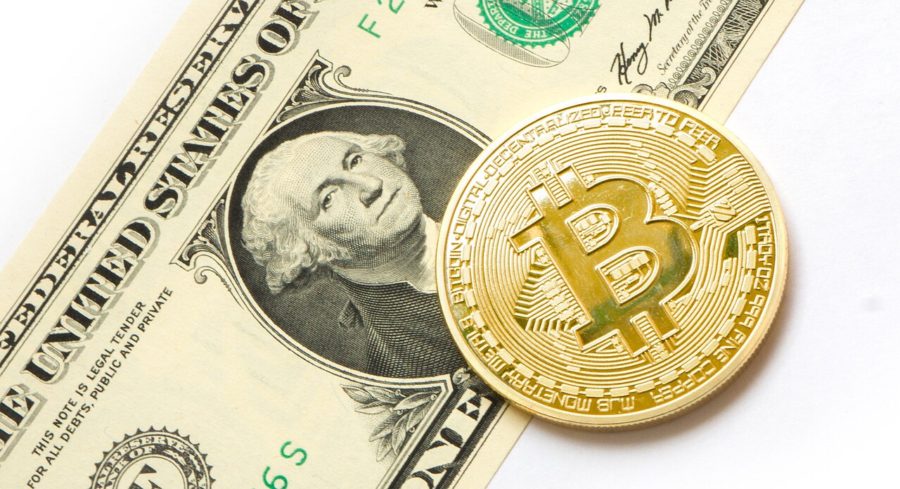When I first moved to Silicon Valley in 1999, I routinely received phone calls from DotCom start-ups looking for a CFO. I was a Controller of a division (close to $1B in revenue) of a big company, but I had just been promoted to that level for the first time and had near zero experience in what I thought was needed to be a CFO (the general advice these days seems to be to pretend you can do it and just take the job). I used to have a list of the companies that called me, and none of them made it. At the time, they told me I was an idiot for not leaping at my chance. Cryptocurrencies remind me of that.
Now, before I continue, I must admit that one of the companies that contacted me was Amazon.com. This was after they had gone public and their stock was quite high. They were looking for employees with inventory and supply chain experience, the title and pay was far below what I was making and I would have had to move to Seattle. The stock suffered in the DotCom bust, so it seemed that my decision to not change jobs was smart, but if I were really the genius that many bitcoin experts claim to be today, I would have invested then. I would have been quite wealthy now if I had.
I can only console myself in that I was also offered a job a few years later for a lower title and pay at a major networking company. When I declined, the recruiter scolded me for being turned off by their attitude and then not long thereafter, they took the largest inventory write-off that I am aware of and the stock really has neve recovered its high-flying ways since then. Finally, and more directly related to cryptocurrencies, I was a long time participant in distributed computing projects like SETI at Home and such and the early appearance of bitcoins and the first miners came from people like me that were using idle cycles of our CPUs to do something else. However, I never installed the bitcoin mining software. In theory, I could have been mining bitcoins when it was possible to solve for them using a regular PC and do it as an individual. If I had done so and kept the bitcoins I made, at today’s prices I would be far wealthier than my reasonably successful career has taken me to.
I added those three examples because I want to make it clear that I have no magical ability to know the future and perfectly guess every opportunity. This is compounded by the fact that you need to choose now and will not know until later, and often much later, if you made the right choice. Using bitcoins as an example, there is not guarantee that I would not have sold the coins at $100. Considering that I have played Magic the Gathering (a card game) off and on for quite a while, it is likely that I would have placed coins in MtGOX and lost everything I put in there. When you back solve what could have happened, most people solve to the best possibility, not the likely one even if you made one arbitrary correct decision that you did not in the past.
I have seen quite a few posts on bitcoin value cross my feed on Linkedin in the past few weeks, much more than when it was going up and all from people that claim some expertise or professional skill for bitcoin and all suggesting that now is the time to buy the dip.
Blockchain is real technology that is finding new applications. All the cryptocurrencies are experiments and they are valuable for the same reason why anything is valuable – people are willing to spend money on them. There certainly is a good argument that a currency linked to a blockchain has merit and can quite valuable for online transactions. There is no doubt at all that blockchain as a technology will see many applications, like perhaps tracking materials in the pharmaceutical production chains.
There also is no doubt that there will be lasting wealth that comes from the innovation, but I don’t think that trading advice (buy or sell) is the right thing to promote on Linkedin or on a Facebook feed. That type of decision needs to be an informed one from individuals, and older advisers may be trapped in past expectations, but they have also seen a few bubbles pop as well.
Even the arguments around cryptocurrencies and why they have value and are a currency themselves or are more valuable than other traditional currencies are suspect. For those of you that don’t know the standard argument, the normal value drivers mentions are i) production cost, ii) scarcity and iii) utility. The basic argument is that the cost to produce a bitcoin is high, they are scarce by design with only 21 million that can be produced and the blockchain technology makes them useful.
However, the production cost is based on current brute force problem solving and scarcity is all about bitcoin itself, not cryptocurrencies in general. There are near infinite algorithms that can be designed to generate a cryptocurrency and there are plenty of new industries where the first mover did not ultimately dominate (Netscape is a good example as is Visicalc and many other similar examples). The utility is even questioned because the transaction time and process to verify a transaction is thought to be too long and many merchants that had been accepting the currency have abandoned it as the transaction time exposed them to too much valuation variance. Even the early criminal use of bitcoins (the initial foundation in its value came from criminals using it to transfer money for drug deals and to do money laundering) has suffered as authorities have proven to be much better at tracking and shutting down bitcoin fueled deals than was originally assumed.
Even the crypto part of the equation may ultimately prove to be flawed as there still is the real possibility that the assumptions behind the math that powers it may ultimately prove to be false. Eventually there may be no more “greater fools” and there is a risk when you buy that you will end up being the last and most foolish.
I’ll try and parse through my thinking on these types of opportunities to show the how I think through I as an example of what I have done in the past as a CFO and what I do today when asked for advice as a consultant.
First, the normal reaction is to shut down and say “no” to new opportunities because these always represent additional effort needed and additional risk. In the case of bitcoin, the easy responses are “tulip mania”, “artificial bubble” and “ponzi scheme”. I am not saying that those responses are correct, but the longer I have been at it, the easier I find my mind comes to a way to say no. Saying no is easier, and, since the consequences of saying yes or no are rarely immediate, you can insulate yourself from the lost opportunity or loss easily. The problem is, saying “no” is easier, but it also closes down growth and opportunity and isolates you from changes in the market. When I detect that instinctive “no”, I push it down and listen and ask one or two simple questions. This is not free, that costs time and mental effort and causes some distraction, but I think that cost is worth the possible upside, so I pay it more often than not.
The questions I normally ask are: 1) Is this a decision I can or should make, 2) Can I or we afford the expense (or not afford to spend it), 3) How long do I have to consider it, and 4) Can I understand pretty quickly what the idea is all about and how it would be profitable?
The first question is an interesting one. As a Finance professional, and especially as you move up the management ranks, you will get both increasing power over spending and increasingly be lobbied for many different ideas outside of the traditional Finance responsibilities. However, you also need to know your limitations. One advantage of being part of a team is access to opinions and expertise of your team members, and using that will probably result in more informed decisions. You also need to consider that the latest encryption standard may seem cool to you, but the head of IT may not want you to install the ransomware you were just pitched in email.
The second question really is about practicality. I would love to have several different phones and VR headsets and whatever else comes out to see which one is good, but I only really need one phone at a time and I barely have time to use the VR headset I already have, so even more does not help. In the case of bitcoins, like most people, I have a wide variety of investment options in front of me, and bitcoins are just one of them.
Coupled with the cost and time commitment is the need to understand if you should be doing without it. I could just use pen and paper and brain power to calculate my taxes, but Turbotax does a much better job and does it much faster. The danger with budget or time pressures are that you may ignore something important. I have used the time when I was flying to read up on new technologies and I have always carved out some time to look at what has changed in the market compared to what has been happening. This is important for personal portfolios and reserving even a small amount of your investment capital (5%) to invest in new technologies or trends can help here.
It has been my experience that the shorter time you have to make a decision, the less something makes sense. There always is lots of marketing and media hype to buy or sell now, but rarely do you need to make an instant decision. If a technology is good, or a trend really has changed, you can enjoy the benefit well enough if you spend a little more time to make sure you understand what you are considering. Most importantly, the risks it brings. In the case of cryptocurrencies, there are a lot of self-proclaimed experts, but most a simply hyping without any depth or new information. I also have seen a disturbing pattern emerge of people with fairly questionable backgrounds suddenly getting involved. It sure is easy to promote this new idea that replaces traditional investment products when you lost your broker license because you were convicted of defrauding your clients.
Counter to the previous concept of making sure you have enough time to consider the new opportunity, it also must be something that you can grasp with a reasonable amount of time and effort. There are always slight edges that someone with a decade of experience and education can exploit, but it might not be the right thing for you to try and figure out. Quite often new technology products work well for people with the specific skillset to use them but are not worth the cost f you cannot program or change all the base setting on your computer to get the additional 5% performance boost. Learn to recognize when something is more complex than you have the training and time to understand quickly and deeply enough and reach out for help. Do not be afraid to say you do not know or do not understand.
I have always been an intuitive problem solver but working in my chosen field which is seeped in process and logical progression, I have to take what I feel is right based on my internal process and break it down in a way that I can repeat and explain it to the people waiting for my decision.
In the case of bitcoins, and other cryptocurrencies, I have seen little reason other than pure speculation, to try them out in any real way. I can understand that the base technology is something to follow closely, but I do not think that it is something that needs urgent action and there are real risks of fraud and theft and regulatory curtailment. I also am concerned about the poor quality of the advisers that have attached themselves to it. As I cautioned up front in this blog, I could have made quite a bit of money just by embracing bitcoins earlier in my life and I was a natural fit for the early adapters there. Unlike the self-called experts I see in the media these days, I know that I don’t know a lot of the details and I think it is not worth my time and money to learn more, but it is complicated and I could be missing something. I have a real edge in other investment and finance areas and I am choosing to spend my time there.


